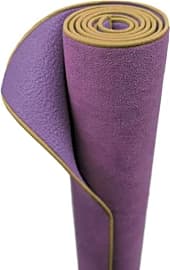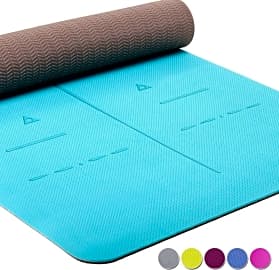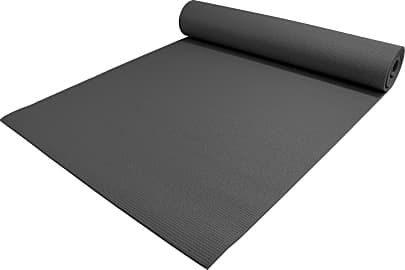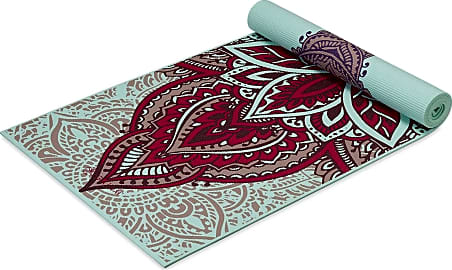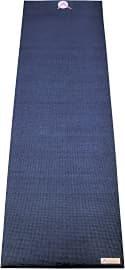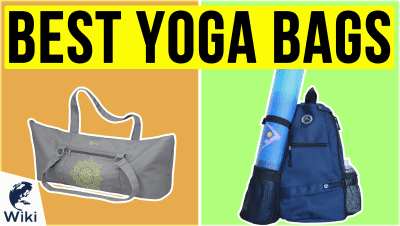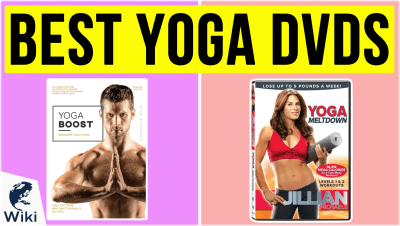The 10 Best Yoga Mats

This wiki has been updated 40 times since it was first published in May of 2015. There are few things better for your body than regularly practicing yoga — assuming you have a good mat, that is. The options below will spare your back, knees, and elbows from the hard ground, while also providing support and helping you to keep your balance. Regardless of whether you're a seasoned yogi or a complete beginner, you're sure to find one you'll want to "nama-stay" on (I'm so sorry). When users buy our independently chosen editorial picks, we may earn commissions to help fund the Wiki.
Editor's Notes
January 30, 2020:
While it seems a simple enough invention, some yoga mats can be better or worse for people with certain conditions, goals, and experience levels. For example, items like the newly-added Manduka Pro offer closed-cell construction, which helps block bacteria and moisture from sweat and makes cleaning easy. Then, some people prefer an open-cell design, like with the Jade Harmony, which can help provide a solid grip for hands and feet. Open-cell options are better if you don't perspire that much, or are okay with thoroughly washing and drying your mat consistently.
If you walk to class or travel with your mat often, then a lightweight option like BalanceFrom GoYoga is a good idea. It also comes with a carrying strap, as does the Sivan Health and Fitness. Those who want to take something compact on a vacation should consider something from our list of travel yoga mats.
Today we added the high-end Manduka Pro at the expense of the Youphoria Premi-Om, which became unavailable, and the Heathyoga Eco Friendly in place of the AmazonBasics Extra-Thick. The AmazonBasics model is a solid choice if you want something budget-friendly and thick, however, the Sivan Health and Fitness and Aurorae Classic both satisfy those needs. We thought the ranking would be better served with something like the Heathyoga model, a biodegradable selection with an exclusive design that keeps practitioners in alignment. This is extremely helpful for those with poor balance and brand new yogis.
Speaking of being eco-friendly, a huge priority for this list was selecting options that are free of toxic chemicals, don't use unsustainable materials, last a long time without needing replacement, and will biodegrade once discarded.
Special Honors
Lululemon The Reversible Mat Made with extra cushion for hands, knees, elbows, and hips, the Reversible Mat sports a polyurethane top layer that absorbs moisture to help you get a grip during sweaty practices and a natural rubber base to provide cushioning and a textured grip for low-sweat sessions. An antimicrobial additive helps prevent mold and mildew, and it can be washed with warm soapy water. Available in five colors. lululemon.com
Chakra Carma Notably expensive and only available by special order, mats from Chakra Carma are made from high-quality vegetable-tanned leather and adorned with ethically sourced gemstones, including diamonds, rubies, emeralds, sapphires, amber, opals, and carnelian to represent various chakras. You can inquire for one-of-a-kind custom creations that include choice of carats, engravings, and dedications, and your mat is backed by a lifetime guarantee. chakracarma.com
Baller Yoga For those willing to spend a premium, there are mats from Baller Yoga. Each one is crafted in the United States from 100% pebble-grain football leather, integrating the genuine grip and release that football players enjoy. They are naturally porous and resistant to sweat, crafted to last a lifetime, and responsibly sourced from natural byproducts that would otherwise be discarded. balleryoga.com
Are Yoga Mats Necessary?
On the hard wooden floor of a yoga studio, the sweat accumulated from a simple one hour class can be a serious slipping hazard.
Perhaps no other symbol of modern yoga has come so far as the yoga mat. But are they completely necessary?
In essence, the yoga mat is a reminder for the modern yogi. In the busy life of the modern era, the mind is filled with any number of thoughts. As the term yoga itself means many different things which have taken lifetimes to discuss, the mat is a reminder of an area in which the body, mind, and spirit are sacred parts of one whole being; a place to allow the yogi to forget about the stresses of daily life and focus on the practice.
Physically, the yoga mat provides many benefits. First and foremost it provides traction. Various poses, such as downward-facing dog or warrior II, can require a lot of traction. If a yogi intends to do these poses on the flat wooden floor of many yoga studios, they will be met with a slippery, unsafe surface. Though serious injuries are rare in yoga; accidents do happen. A yoga mat provides all the necessary traction, thus ensuring that your focus can be on the pose itself rather than worrying about falling down or injuring your body.
Another unmentioned benefit of a yoga mat is sweat collection. Most mats are made of non-porous materials; so they do not collect sweat as much as they simply allow it a place to sit. On the hard wooden floor of a yoga studio, the sweat accumulated from a simple one hour class can be a serious slipping hazard.
Many yoga mats are made extra thick, providing padding to delicate bodies on hard surfaces. These mats make it easy to do yoga anywhere; indoors or outdoors. In the winter months, this padding also means that yoga mats provide insulation and warmth for the body; especially important for those sunrise classes.
Using A Yoga Mat To Its Fullest Potential
To achieve the fullest potential from any yoga mat; it is important to make yoga a daily habit. Even if it means doing just ten simple poses every day; the benefits of a habitual yoga practice are outstanding.
Yoga also keeps the practitioner mentally and emotionally balanced.
Yoga provides benefits to the body's all around fitness levels. A cumulative review indicated that in both healthy and diseased populations, yoga may be as effective as, or better than, basic exercises at improving a variety of health indicators.
Yoga also keeps the practitioner mentally and emotionally balanced. The practice itself is holistic; not focusing solely on the body with postures; but breathing techniques and meditation as well. This holistic approach to stretching and exercise improves the mood and modulates the body's stress response too.
In a separate study from 2005, women who were emotionally distressed were separated into two groups. The control group did nothing new; while the test group took two 90 minute yoga classes each week for just three months. After the three month period was up; the test group rated themselves as less depressed, less anxious, and were considered 65 percent more well-rounded than when they had started the program.
Yoga Mats Around The World
Yoga had its humble beginning over 5,000 years ago, since the first asana, yogis favored natural yoga mats to support their bodies during the postures. In the beginning, this was as simple as using the natural earth. Oddly enough, this ancient practice also combined all the benefits of earthing to their yoga practice; including collecting electrons from the earth to help dispel free radicals in the body.
In the west, it was originally most common to see yogis spread out on beach towels or cotton mats designed for yoga.
From there, yogis moved their practice onto rugs made of kusha grass, native to India. More affluent yogis practiced on a deerskin rug, and the most bold practiced on a rug made of tiger skin.
Since the early days of yoga mats, many different styles have emerged. From bamboo mats to basic cotton towels; the global spread of yoga practitioners created an evolution in yoga mats. In the west, it was originally most common to see yogis spread out on beach towels or cotton mats designed for yoga. As the wooden floors of most yoga studios proved to be very slippery, rubber pads were introduced below the cotton mats to prevent slipping. Eventually, the entire mat was made of rubber or various PVC products.
The first person to capitalize on this need was Angela Farmer, a yoga teacher from London. She used the foam underlay of carpets underneath her cotton mats, and the idea caught fire. The Farmer family became the first to offer the sticky mats we are most familiar with today.
Since then, the yoga mat has evolved even more. The first yoga-specific mats were offered in the 1990s, and soon to follow were eco-conscious mats and even biodegradable mats.



